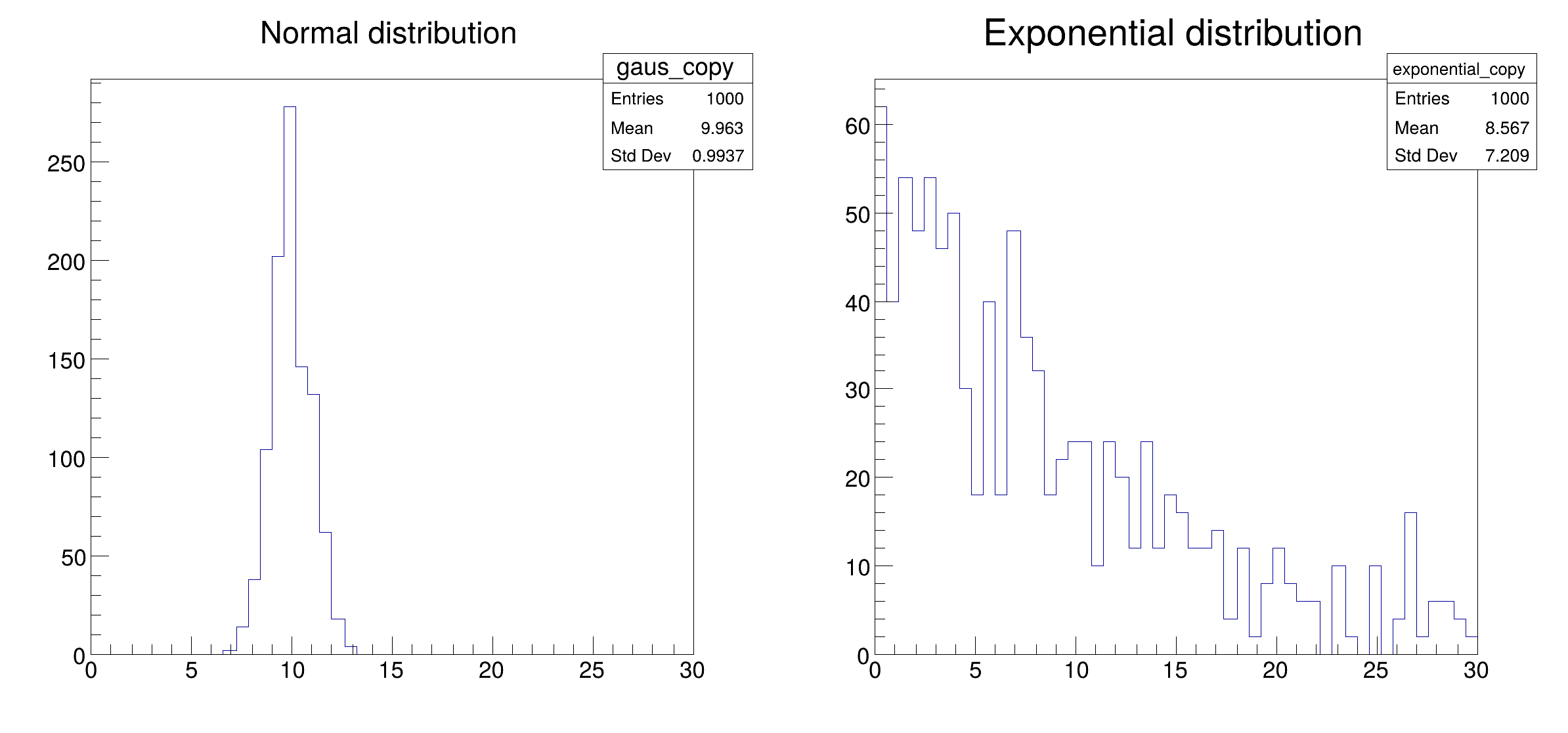

Configure a Spark connection and fill two histograms distributedly.
This tutorial shows the ingredients needed to setup the connection to a Spark cluster, namely a SparkConf object holding configuration parameters and a SparkContext object created with the desired options. After this initial setup, an RDataFrame with distributed capabilities is created and connected to the SparkContext instance. Finally, a couple of histograms are drawn from the created columns in the dataset.
import pyspark
import ROOT
{"spark.app.name": "distrdf001_spark_connection",
"spark.master": "local[2]",
"spark.driver.memory":
"4g"}.
items())
df_1 =
df.Define(
"gaus",
"gRandom->Gaus(10, 1)").Define(
"exponential",
"gRandom->Exp(10)")
h_gaus =
df_1.Histo1D((
"gaus",
"Normal distribution", 50, 0, 30),
"gaus")
h_exp =
df_1.Histo1D((
"exponential",
"Exponential distribution", 50, 0, 30),
"exponential")
c.SaveAs(
"distrdf001_spark_connection.png")
print("Saved figure to distrdf001_spark_connection.png")
ROOT::Detail::TRangeCast< T, true > TRangeDynCast
TRangeDynCast is an adapter class that allows the typed iteration through a TCollection.
ROOT's RDataFrame offers a modern, high-level interface for analysis of data stored in TTree ,...

- Date
- March 2021
- Author
- Vincenzo Eduardo Padulano
Definition in file distrdf001_spark_connection.py.


